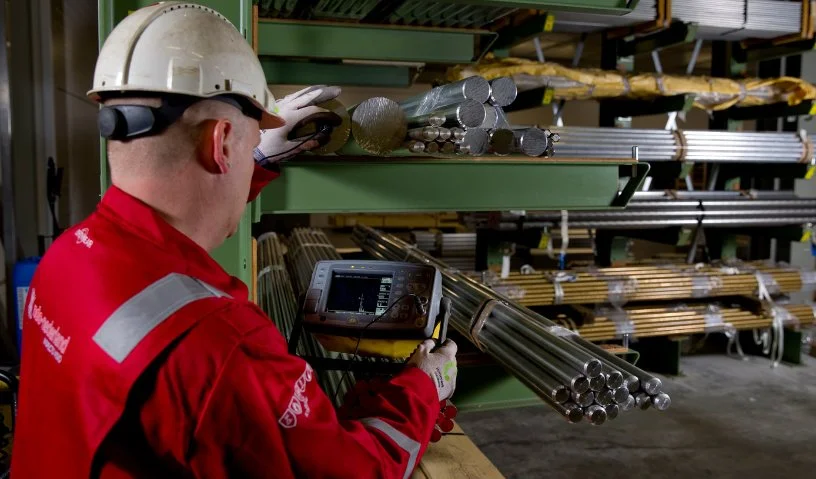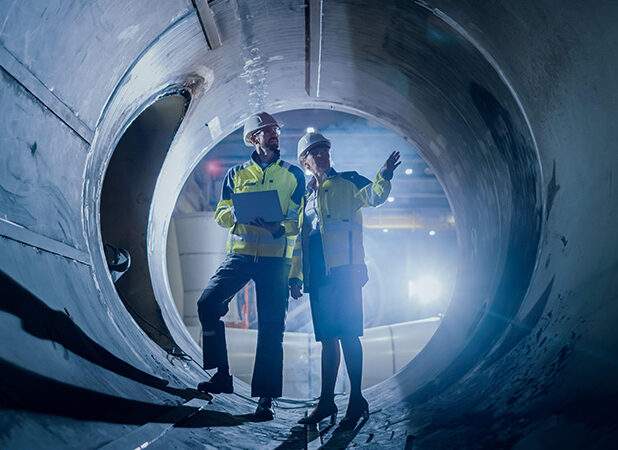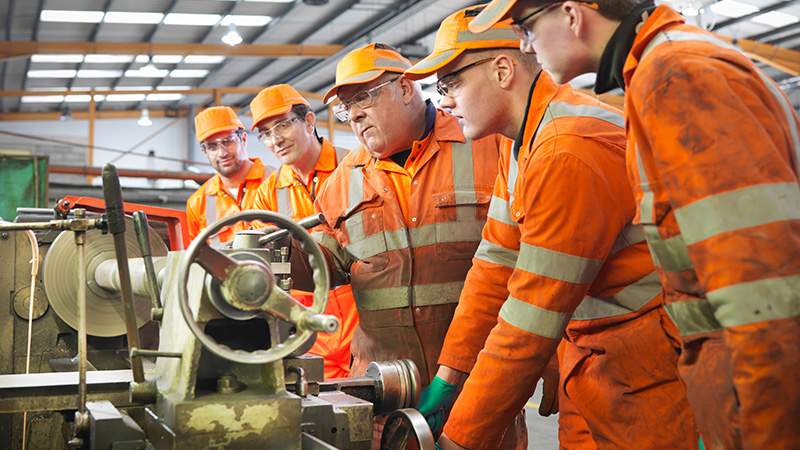Definition of X-ray inspection
It plays a crucial role in the energy sector, particularly within the realms of oil and gas, ensuring the integrity, reliability, and safety of critical infrastructure. X-ray Inspection is a non-destructive testing method that scrutinizes the internal structure of materials. By providing a glimpse beneath the surface, these inspections offer insights that are essential for quality control and safety assessments.

Engineer performing non-destructive testing in the form of x ray inspection. Source.
Applications of X-ray Inspection in the Energy Sector
Quality Control in Pipelines
X-ray Inspection is a powerful quality control tool for pipelines. It allows for thorough examination of welds, detecting potential defects or inconsistencies that could compromise the pipeline’s structural integrity. This application ensures that pipelines meet strict quality standards before being deployed for energy transportation.
Equipment Integrity Assessment
X-ray Inspection is used to assess equipment integrity in the energy sector. Critical components, such as valves, connectors, and structural elements, undergo X-ray scrutiny to identify hidden flaws or irregularities. This proactive approach helps prevent potential failures and ensures the safety of operational processes.
Advantages of X-ray Inspection in the Energy Industry
Non-Destructive Nature
X-ray Inspection is a non-destructive testing method that allows for thorough examinations without compromising the integrity of materials. This characteristic is especially critical when assessing the structural soundness of pipelines and equipment in the energy sector.
Precision in Defect Detection
The precision of X-ray Inspection in detecting defects is unmatched. This method provides high-quality images of the internal structure of materials, allowing for the identification of even the smallest flaws or irregularities. This precision is essential for maintaining the highest standards of quality and safety in energy-related infrastructure.
Conclusion
In conclusion, X-ray Inspection is a crucial technique in the energy sector, revealing the internal intricacies of materials essential for oil and gas operations. Its applications in quality control and safety assessments significantly contribute to ensuring the reliability and integrity of critical infrastructure. As the energy industry evolves, this type of inspection remains essential for mitigating potential risks and upholding high standards of quality and safety.
Frequently asked questions
What is X-ray Inspection, and how does it contribute to the energy sector?
X-ray Inspection is a vital technique in the energy sector, especially in oil and gas. It is a non-destructive testing method that scrutinizes the internal structure of materials, ensuring the integrity, reliability, and safety of critical infrastructure.
How does X-ray Inspection contribute to quality control in pipelines?
X-ray Inspection serves as a powerful quality control tool for pipelines. It allows for a thorough examination of welds, enabling the detection of potential defects or inconsistencies that could compromise the structural integrity of pipelines.
What role does X-ray Inspection play in the assessment of equipment integrity in the energy sector?
X-ray Inspection is instrumental in assessing equipment integrity in the energy sector. Critical components, such as valves, connectors, and structural elements, undergo X-ray scrutiny to identify hidden flaws or irregularities.







